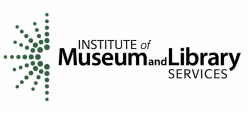Standards
Science for young children, birth through grade 3, is focused on developing habits of mind such as curiosity, questioning, openness to new ideas, and persistence. This is a time when children are experiencing the world around them and enthusiastically constructing knowledge. Science should be relevant, concrete, and at children’s fingertips, allowing for understanding through their senses. Emphasis is on aspects of the natural world that can be explored. The younger the child, the more tangible the experience should be. (Vermont Early Learning Standards, 2015)
Science is both a body of knowledge that represents current understanding of natural systems and the process whereby that body of knowledge has been established and is being continually extended, refined, and revised. Both elements are essential: one cannot make progress in science without an understanding of both. Likewise, in learning science one must come to understand both the body of knowledge and the process by which this knowledge is established, extended, refined, and revised. (Taking Science to School, NRC, 2007)
The Next Generation Science Standards (NGSS, see link below) were released in 2013. Although these standards are clearly for grades K-12, they are also relevant for preschool. Many states have developed preschool standards that are based on the NGSS model and content (see Vermont Early Learning Standards, 2015; Massachusetts Department of Education, 2013, link below). The NGSS are organized into a framework that consists of Scientific and Engineering Practices, Crosscutting Concepts and Disciplinary Core Ideas.
Scientific and Engineering Practices
• Asking questions (science) and defining problems (engineering)
• Developing and using models
• Planning and carrying out investigations;
• Analyzing and interpreting data
• Using mathematics and computational thinking
• Constructing explanations and designing solutions
• Engaging in argument based on evidence
• Obtaining, evaluating and communicating information
Crosscutting Concepts
• Patterns
• Cause and effect relationships
• Cycles, sustainability
• Stability and change
• Scale, proportion and quantity systems
• Structure and function
• Energy and matter
Disciplinary Core Ideas
Physical Science
Engineering, Technology and the Application of Science
Life Science
Earth and Space Science
Massachusett's Preschool Science and Technology/Engineering Standards (download)
These standards are based on the Next Generation Science Standards. The Pre-K (STE) standards for preschool children, ages 2 years and 9 months through 5 years old, are the highest quality early learning and development standards for young children that articulate multi-domain expectations for children’s growth and support continuity in early education from birth through kindergarten. At the same time, these early learning and development standards will provide a foundation for creating learning and growth opportunities for children across all communities and families and across both informal and formal environments.
Next Generation Science Standards K-12
Within the Next Generation Science Standards (NGSS), there are three distinct and equally important dimensions to learning science. These dimensions are combined to form each standard—or performance expectation—and each dimension works with the other two to help students build a cohesive understanding of science over time. The three dimensions are: Cross-Cutting Concepts, Science and Engineering Practices and Disciplinary Core Ideas.
Science is both a body of knowledge that represents current understanding of natural systems and the process whereby that body of knowledge has been established and is being continually extended, refined, and revised. Both elements are essential: one cannot make progress in science without an understanding of both. Likewise, in learning science one must come to understand both the body of knowledge and the process by which this knowledge is established, extended, refined, and revised. (Taking Science to School, NRC, 2007)
The Next Generation Science Standards (NGSS, see link below) were released in 2013. Although these standards are clearly for grades K-12, they are also relevant for preschool. Many states have developed preschool standards that are based on the NGSS model and content (see Vermont Early Learning Standards, 2015; Massachusetts Department of Education, 2013, link below). The NGSS are organized into a framework that consists of Scientific and Engineering Practices, Crosscutting Concepts and Disciplinary Core Ideas.
Scientific and Engineering Practices
• Asking questions (science) and defining problems (engineering)
• Developing and using models
• Planning and carrying out investigations;
• Analyzing and interpreting data
• Using mathematics and computational thinking
• Constructing explanations and designing solutions
• Engaging in argument based on evidence
• Obtaining, evaluating and communicating information
Crosscutting Concepts
• Patterns
• Cause and effect relationships
• Cycles, sustainability
• Stability and change
• Scale, proportion and quantity systems
• Structure and function
• Energy and matter
Disciplinary Core Ideas
Physical Science
Engineering, Technology and the Application of Science
Life Science
Earth and Space Science
Massachusett's Preschool Science and Technology/Engineering Standards (download)
These standards are based on the Next Generation Science Standards. The Pre-K (STE) standards for preschool children, ages 2 years and 9 months through 5 years old, are the highest quality early learning and development standards for young children that articulate multi-domain expectations for children’s growth and support continuity in early education from birth through kindergarten. At the same time, these early learning and development standards will provide a foundation for creating learning and growth opportunities for children across all communities and families and across both informal and formal environments.
Next Generation Science Standards K-12
Within the Next Generation Science Standards (NGSS), there are three distinct and equally important dimensions to learning science. These dimensions are combined to form each standard—or performance expectation—and each dimension works with the other two to help students build a cohesive understanding of science over time. The three dimensions are: Cross-Cutting Concepts, Science and Engineering Practices and Disciplinary Core Ideas.




